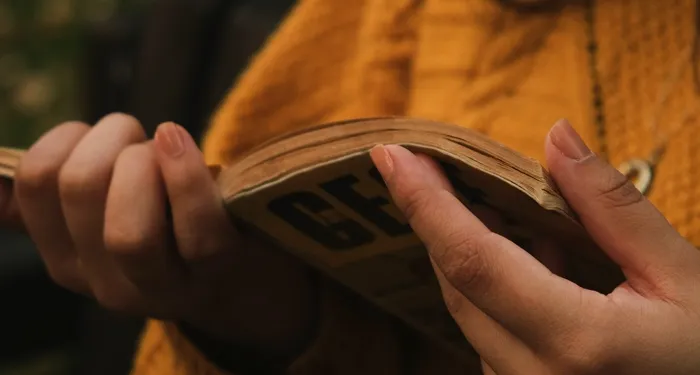Before there was the world-famous hit-making Dave Brubeck Quartet, there was a far less popular Dave Brubeck Octet. Brubeck formed the group in 1946 at Mills College in Oakland, California, where he enrolled on the GI Bill to study under the French neoclassical composer Darius Milhaud. His bandmates were also Milhaud’s pupils: tenor saxophonist David Van Kriedt and clarinettist William O. Smith, who with Brubeck wrote much of the group’s library between them, trumpeter Dick Collins, trombonist Bob Collins, and bassist Jack Weeks. The exceptions were drummer Cal Tjader and Paul Desmond, later the star saxophonist of Brubeck’s quartet, who both turned up through links with the local jazz scene.
Milhaud left a deep mark on the octet. A Jew who fled Paris for Oakland in 1940, he was unusual among European composers in his passion for jazz, fortified two decades prior on a trip to New York. Far more convincingly than George Gershwin’s Rhapsody in Blue (1924), his ballet La création du monde (1923) wrote the art form’s spontaneity and improvisational heat into a fully scored piece for classical players. Milhaud’s unruly melodies progressed in unexpected phrase lengths and often elbowed past the measure. He ran independent tunes together, letting seemingly irreconcilable materials loose in the same space.
Behind this apparent anarchy was a composer of steely discipline. Brubeck recalled the intensity with which Milhaud taught the grammar of composition, all those exercises in counterpoint and harmony based on Bach. The melodic purity of Mozart was another reference point. Then there were modern composers: in Paris Milhaud had immersed himself in Stravinsky, Satie, Ravel, and Debussy, whose innovations in polytonality (music written in different keys played simultaneously) he passed on to his students. He urged them to form an ensemble to play their own pieces—and made clear that, as young Americans, they would be wise to embrace jazz.
The Dave Brubeck Octet took these lessons to heart: their library of tailor-made compositions and takes on jazz standards is marked by sleights of hand with form, experiments with regular meter, Stravinskian harmonies, and freewheeling counterpoint. The heady brew went down well on campuses but San Francisco audiences were a different matter. They wanted either dance-band music or Dixieland jazz; the octet’s elaborate fusion of composition and improvisation didn’t open many doors. In its earliest days, the group picked up a gig in a Chinese restaurant where, billed as “The Dave Brubeck Octet,” they were fired; they then tried to go back a few weeks later under the name “The David Van Kriedt Octet”—and were fired again. Even Brubeck’s father, emerging from a concert, told a newspaper reporter, “That’s the damnedest bunch of noise I ever heard.”
Brubeck endured nearly a decade of slog and worry. He played badly paid gigs in down-at-the-heel venues and, during one low point, sold sandwiches from the back of a van. When the octet couldn’t find work, he cut his cloth to measure and performed as a trio with Tjader and the group’s later bassist, Ron Crotty. They ditched their original compositions and served up standards like “Body and Soul,” “Laura,” and “I’ll Remember April.” The familiar material proved popular, leading to a residency at the Burma Lounge in Oakland, and another at San Francisco’s prestigious Black Hawk Club. The trio recorded for Coronet, a cottage-industry label that served local Dixieland groups. Those albums feature monumental piano block chords, with multiple tonalities slammed together, and asymmetrical rhythms, as on a radical overhaul of “Singin’ in the Rain.”
Paul Desmond was itching to turn the trio into a quartet; he often sat in with the group. After Brubeck hurt his back in a swimming accident, while recovering he realized that the saxophonist could help with the creative heavy lifting. Formed in 1951, the Dave Brubeck Quartet found instant success, albeit at first only on the West Coast. In 1953 they cut two albums for the independent label Fantasy Records, Jazz at Oberlin and Jazz at the College of the Pacific, which caught the ear of George Avakian, a producer at Columbia Records who had overseen albums by Louis Armstrong, Duke Ellington, and Frank Sinatra, among others. In 1954 the quartet signed to Columbia as part of a corporate spending spree that also brought Miles Davis to the label.
With its promotional clout and lavish budgets, Brubeck hoped Columbia would record his octet. The label would occasionally drop hints to that effect, but they were stringing him along; an experimental eight-piece group was unlikely to sell. In 1959 the quartet released Time Out—a chart-topping album that handed the world “Blue Rondo à la Turk” and “Take Five”—which eclipsed his earlier work. Propelled by commercial demand, the quartet became a full-time priority, and the octet was consigned to a footnote in jazz history.
Another reason the Octet seemed destined for obscurity was the condition of its archive. The recordings that exist, which represent only a fraction of the group’s library, were captured mostly on a portable acetate recorder during their earliest meetings; they had only one professional studio session, in 1950.1 In 1985, when Van Kriedt emigrated to Australia, he took the scores with him; for decades the story persisted that they had been damaged beyond repair when his garage flooded. (Brubeck often expressed frustration at Van Kriedt’s casual treatment of such a precious legacy.) In 2001, when an augmented Brubeck Quartet attempted a revival, they hired the arranger Jeff Lindberg to transcribe the octet’s records so that they could try recording them anew. But the results sound like what they are: musicians carefully playing transcriptions.
Brubeck never gave up on his eight-piece ensemble; in his later years it was a point of reference in interviews. He would have been grateful to the Brooklyn-based saxophonist and composer Jon De Lucia, who, for the better part of decade, has painstakingly reconstructed the octet’s charts, on the basis of recently recovered archival material. That task has now come to fruition with an album, The Brubeck Octet Project. Seven decades after the octet sounded its final note, De Lucia’s musicians—with pianist Glenn Zaleski occupying Brubeck’s stool—play the arrangements with loving attention to detail, then break out in solos like artists who have absorbed everything that subsequently happened in jazz, from John Coltrane to Anthony Braxton (who, in 1973, recorded an album with Brubeck and was a vocal admirer of Desmond). It’s an accomplished piece of musicological archaeology that brings lost pieces of jazz history back to life.
*
De Lucia is drawn to saxophonists who emerged during the 1950s and charted courses independent from bebop, which was then the dominant idiom in jazz. In this regard his lodestars are Lee Konitz, with whom he privately studied, and Desmond—two alto players whose improvisational approaches were distinct from that of Charlie Parker, who all but made the instrument his own. In 1959 Konitz led an octet that played arrangements by reedman Jimmy Giuffre for a classic session, Lee Konitz Meets Jimmy Giuffre. The record grabbed De Lucia and spurred what he describes as an obsession for “archival resurrection.” It “brought me into the whole world of octets,” he recently told me over the phone. “I wanted to perform that material with Lee, and then I started looking for other octet material from the same period we could play.”
The Brubeck octet project was helped by an archival discovery. It turns out that the group’s original instrumental parts were not lost but had, in fact, been stored in the David Van Kriedt papers held at Mills College. The saxophonist likely only took the group scores with him to Sydney. Not that Brubeck could have used those parts without considerable surgery. “They were a mess,” De Lucia whistles. “In the same passage of music, we would realize that one instrument had more measures to play than the rest of us, and we’d have to puzzle it out. Extra bars had been pencilled in all over the place and, playing all the options through, we’d have to deduce whose part was correct.”
Brubeck invariably cited his arrangement of Jerome Kern’s “The Way You Look Tonight” as capturing the very essence of his octet thinking. It perches between Stravinsky and the “progressive jazz” of Stan Kenton, with echoes of the patchwork structure of Duke Ellington’s 1940 “Harlem Air Shaft.” But the term “arrangement” doesn’t do justice to the way Brubeck reassembles the song’s constituent parts. In the opening bars, he runs the theme alongside a paraphrase of itself, alto saxophone answered by trumpet, before weaving more lines inside the contrapuntal nest. To wrap up, he superimposes Kern’s middle section over the first eight bars, obliging contrasting melodic strains to cohabit. De Lucia’s detective work failed to unearth any material for the arrangement. He had to listen—hard—to the record and write down the notes he heard.

Jacob Blickenstaff
Jon De Lucia, New York City, 2024

John Lake
Jon De Lucia Octet, New York City, 2024
The octet was always a collective effort. In “Fugue on Bop Themes,” Van Kriedt criss-crosses frenetic bop lines like spaghetti. He devours the melody of “September in the Rain,” turning it into a background and adding layers of variation over it. His scoring for brass and woodwind pushes the instruments to their limits, as lines scurry faster than seems possible until they are hanging over the rhythm section underneath like a cartoon cat off a cliff edge. On “IPCA,” William O. Smith makes surprising, sharp-cornered melodic jumps. His fully written out piece for winds, the gnarly “Schizophrenic Scherzo” (not included on De Lucia’s album) looks ahead to his later work as a jazz clarinettist as well as a composer of experimental music that breathed the same air as Milton Babbitt and Karlheinz Stockhausen. For his part, Desmond can be heard searching for that delicate, wistful sound that, in the classic Quartet, became his calling card, providing a counterweight to Brubeck’s more muscular volatility. “Prelude,” recorded in 1950, features his first recorded solo—and a first glimpse of that honeyed, seductive tone.
This was, and remains, technically daunting music. Conventional big-band arrangements place soloists in dependable musical landscapes, through which they can amble with improvisational ease. But the Brubeck Octet wove multiple versions of a tune through one another, while sounding multiple tonalities. De Lucia’s expert players breeze past these challenges, alert to the kaleidoscope of improvisational possibilities, which keeps the music satisfyingly unpredictable. Instrumental lines quiver and wobble like puppets balanced on strings. The bandleader is himself in fine form, bringing a caressing tenderness to “Prelude”—a fine tribute to Desmond.
*
While I was conducting research for a biography of Brubeck, I interviewed Smith.2 He recalled that the octet had given equal emphasis to jazz and modern composition; in some concerts they paired jazz standards with transcriptions of music by Bartók, Milhaud, and Ernst Krenek. De Lucia hasn’t managed to unearth those arrangements, but a second volume of octet music is in the planning stages. It will likely include a fine arrangement of Bernie Miller’s “Bernie’s Tune,” which Gerry Mulligan famously recorded with Chet Baker in 1952; a previously unheard, daredevil reimagining of Cole Porter’s “Just One of Those Things,” in which the theme is locked inside a distorting echo chamber of variations; and an untitled Brubeck piece for winds, boldly atonal, shifting time signatures between 5/8, 7/8, and 6/8. There are also some looser scraps of material, like a fragmentary scoring of Ellington’s “Perdido,” which De Lucia might work into a fully-fledged arrangement. In 1953, octet members joined the quartet at the Black Hawk for a series of Sunday shows. I wonder if that was the version “Perdido” the group performed as a grand finale to one of its last performances.
Seven years later, when the Quartet was well on its way to success, the critic Ralph J. Gleason interviewed Brubeck for Downbeat magazine. He suggested that the Octet had borrowed explicitly from the Miles Davis Nonet, whose 1957 recording Birth of the Cool—featuring an all-star cast that included Konitz, Mulligan, and John Lewis—effectively gave rise to the Cool Jazz genre. Journalists often made this allegation, which unsettled Brubeck. It’s true that both groups cloaked jazz improvisation in instrumental backings influenced by European moderns. But when the Brubeck Octet began recording, Miles was still a sideman in Charlie Parker’s group. Hearing De Lucia’s album confirms that the Brubeck Octet and Davis Nonet were two trains on the same track heading to different stations. The spiky, obstreperous smack of the The Brubeck Octet Project has little in common with the floaty impressionism of Birth of the Cool.
In the hands of De Lucia and his musicians, the Octet arrangements fly off the page with abandon and vibrancy. Their record is a reminder that Brubeck both conceived robust compositional forms and left space for passionate improvisation—always looking two ways at once. Barely heard in its time, the octet was a gift for the future: it made the damnedest bunch of noise you ever heard.





















 English (US) ·
English (US) ·